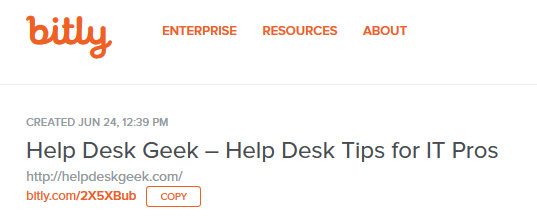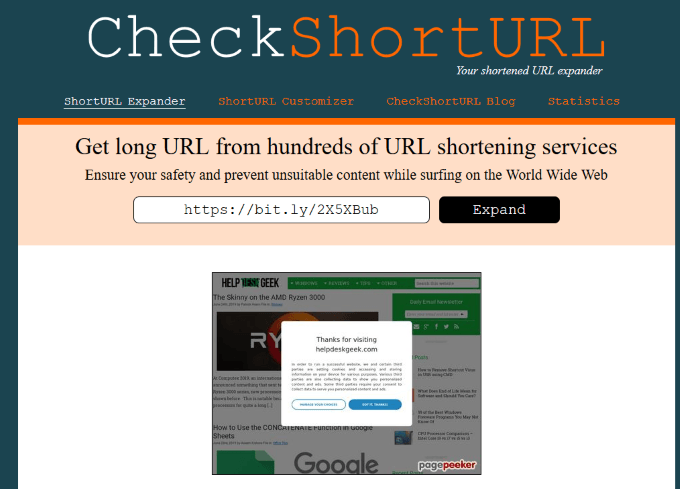But there is a darker side to short URLs too in that you have no idea where they are going. When you click on a short URL, you are putting blind faith in the person that they are not sending you to a phishing site or a virus download. If it is the New York Times or the BBC, well that’s OK. You can trust big brands. But if it’s Mr MysteryMan from MysteryTown, then who knows what rabbit hole you are being taken down?
TinyURL
If you have a TinyURL link, simply replace “www” with “preview” after the “https://” like so : https://preview.tinyurl.com/yxnc3gr8 This will then take you to the TinyURL website where you will be told the long URL. A link is provided to take you to the site if you deem it safe.
Bitly
If you find yourself with a Bitly link and you don’t know where it goes, then just add a “+” onto the end of the URL, like so : https://bit.ly/2X5XBub+ Then you will be taken to the Bitly site where it will display the long URL. All looking good? Then click the “Copy” link which gives you the short URL without the “+” sign. Copy and paste into your browser and off you go.
Use An Online
Service
If you prefer, you can use an online service to run all short URLs through. In this area though, there are so many choices for URL expanders that it can be difficult to know which one to use. I particularly like CheckShortURL. After entering the short URL, it will bring back the long URL, as well as a thumbnail picture of the page, and other useful links such as checking the safety of the page. At the end of the day, the golden rule should always be “if in doubt, don’t click that link”. Nothing is worth risking a virus for, or having your account details hacked by a phisher. But tips like this help to draw the curtain back just a little bit and show you where the link is trying to take you.




